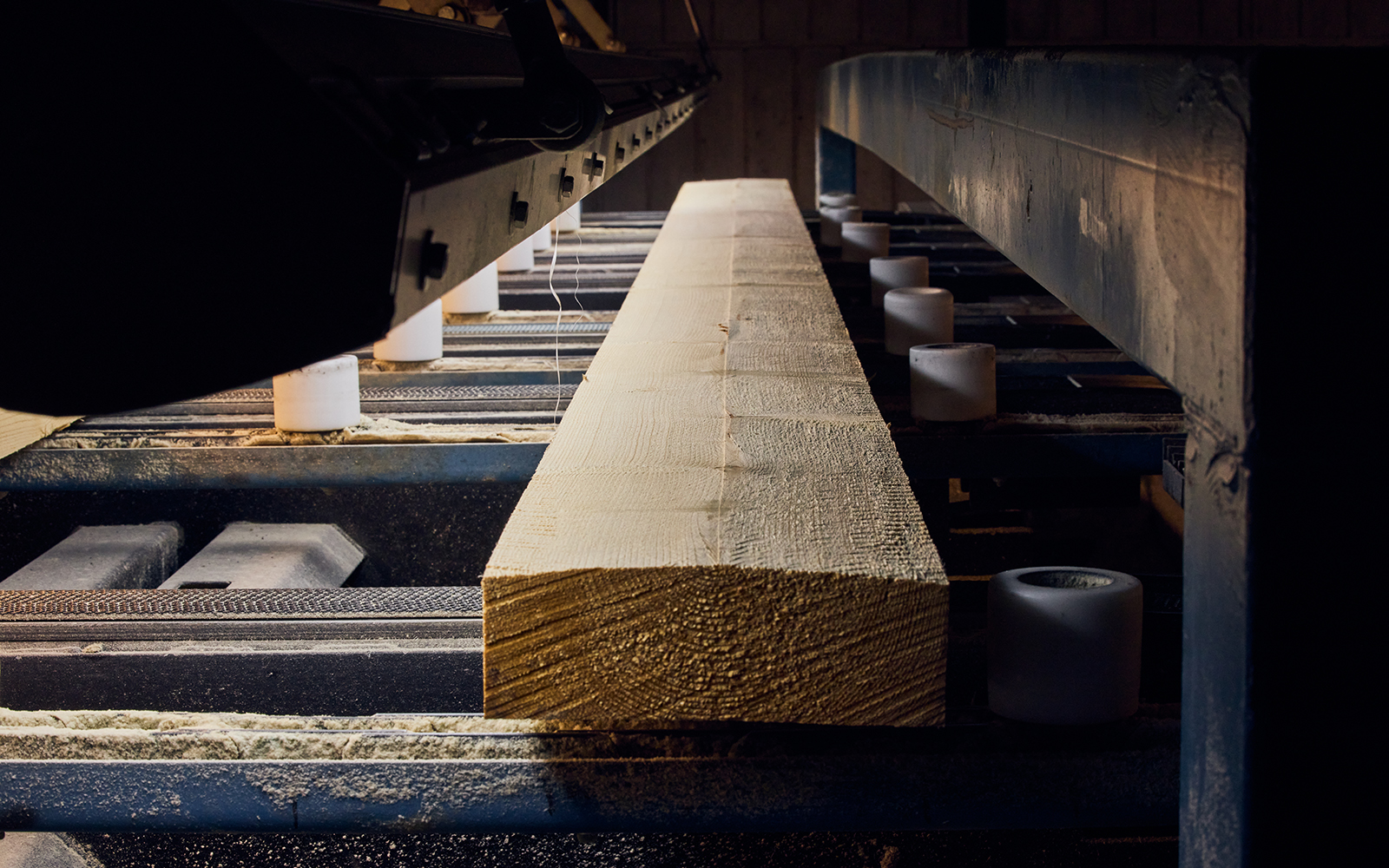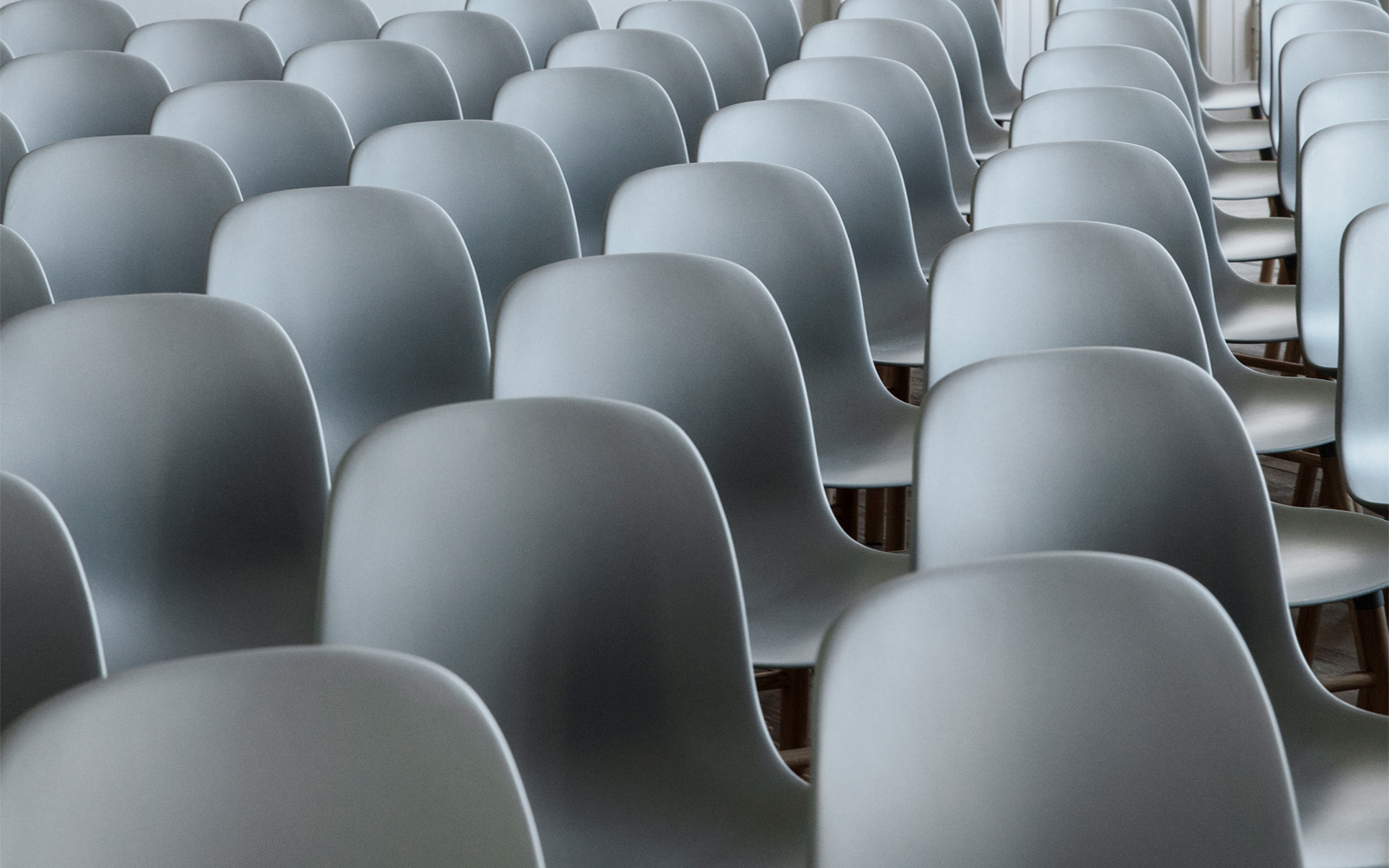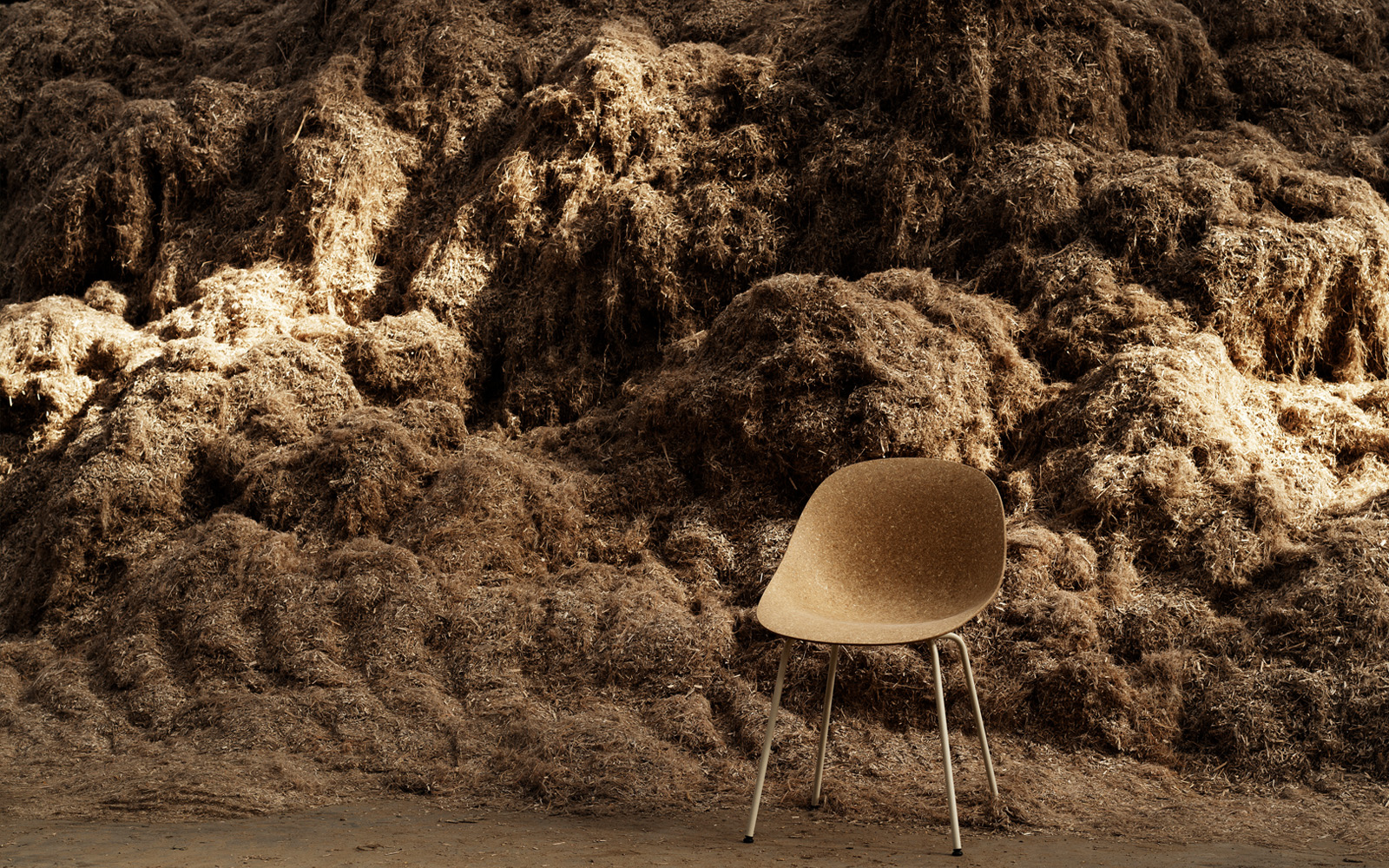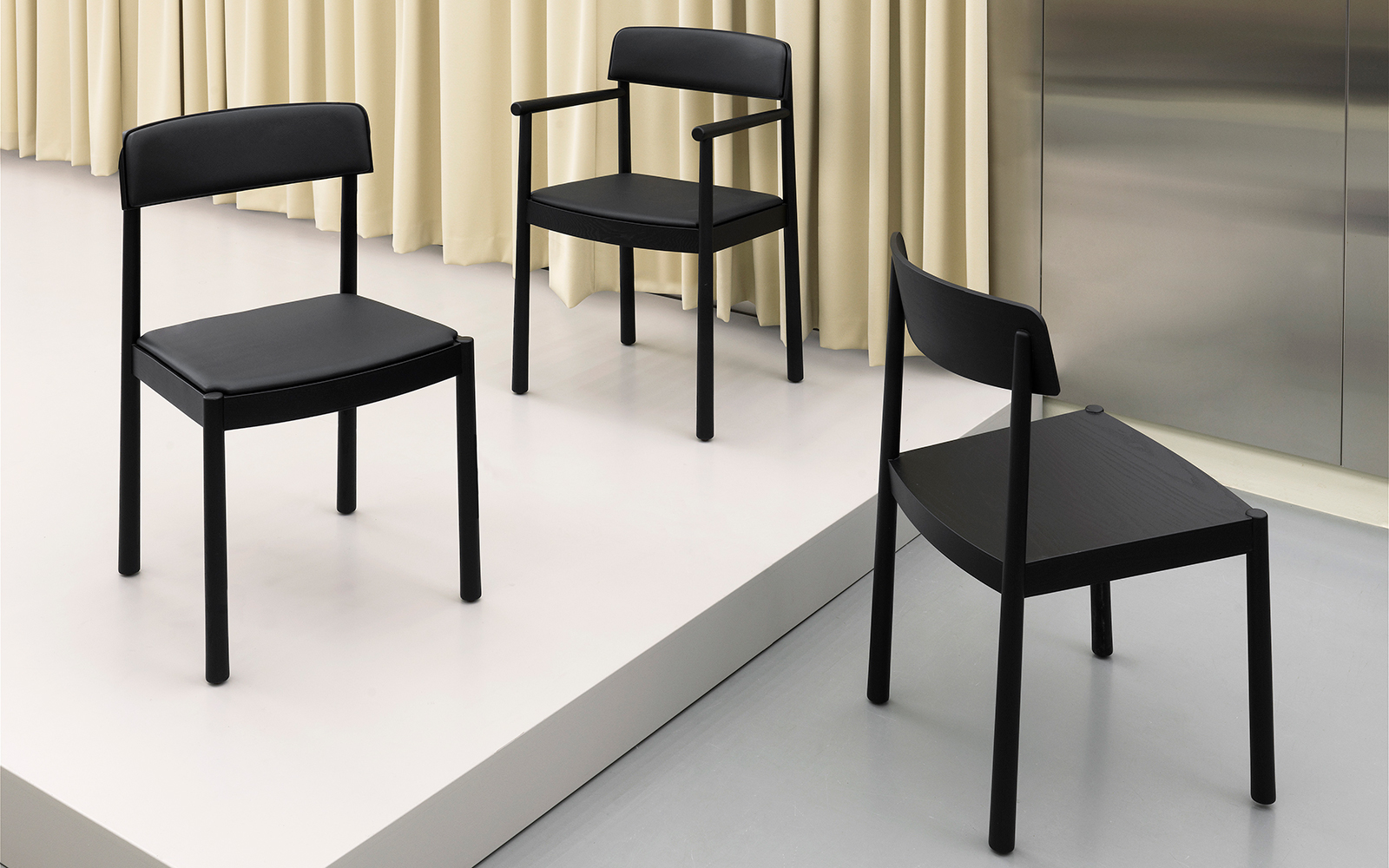
Timb chair - An honest design
Timb is the fundamental essence of a chair whose clean and humble design emerges from its function, and a new wooden chair to be a particularly meaningful addition to our collection of dining chairs. The name Timb is an expression of the chair’s simple vision for the value of its material.
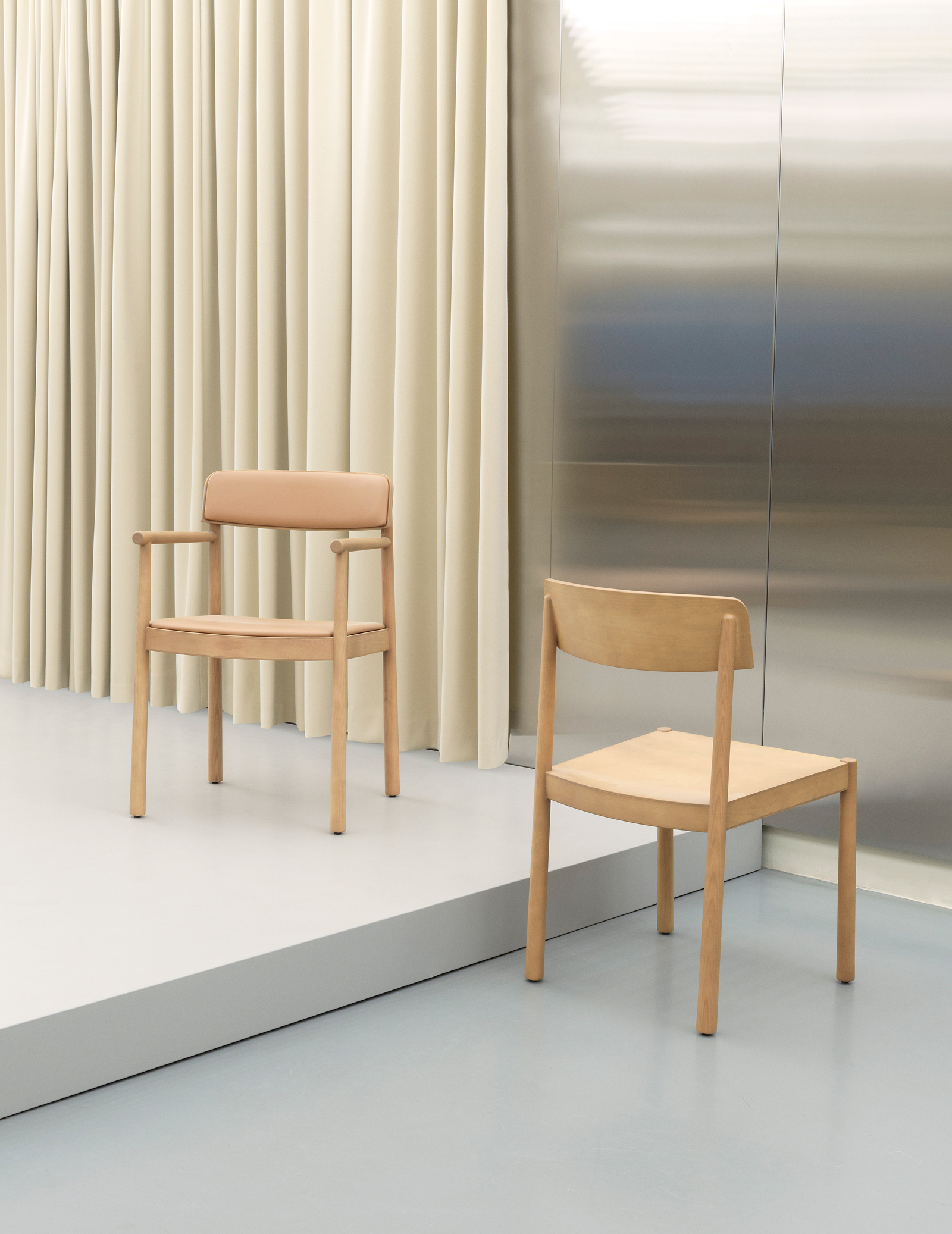
The Timb chair is produced responsibly using materials and craftsmanship of the highest quality for sustainable and long-lasting furniture. Following a careful search for precisely the right partner, the choice fell on a manufacturer in Portugal with a long tradition of working with ash. Ash is indigenous to Europe and known for its elasticity and tensile strength, which is why it has a long history of being used in the furniture industry. The ash used for Timb is sourced in France and is PEFC-certified, ensuring sustainable forestry.
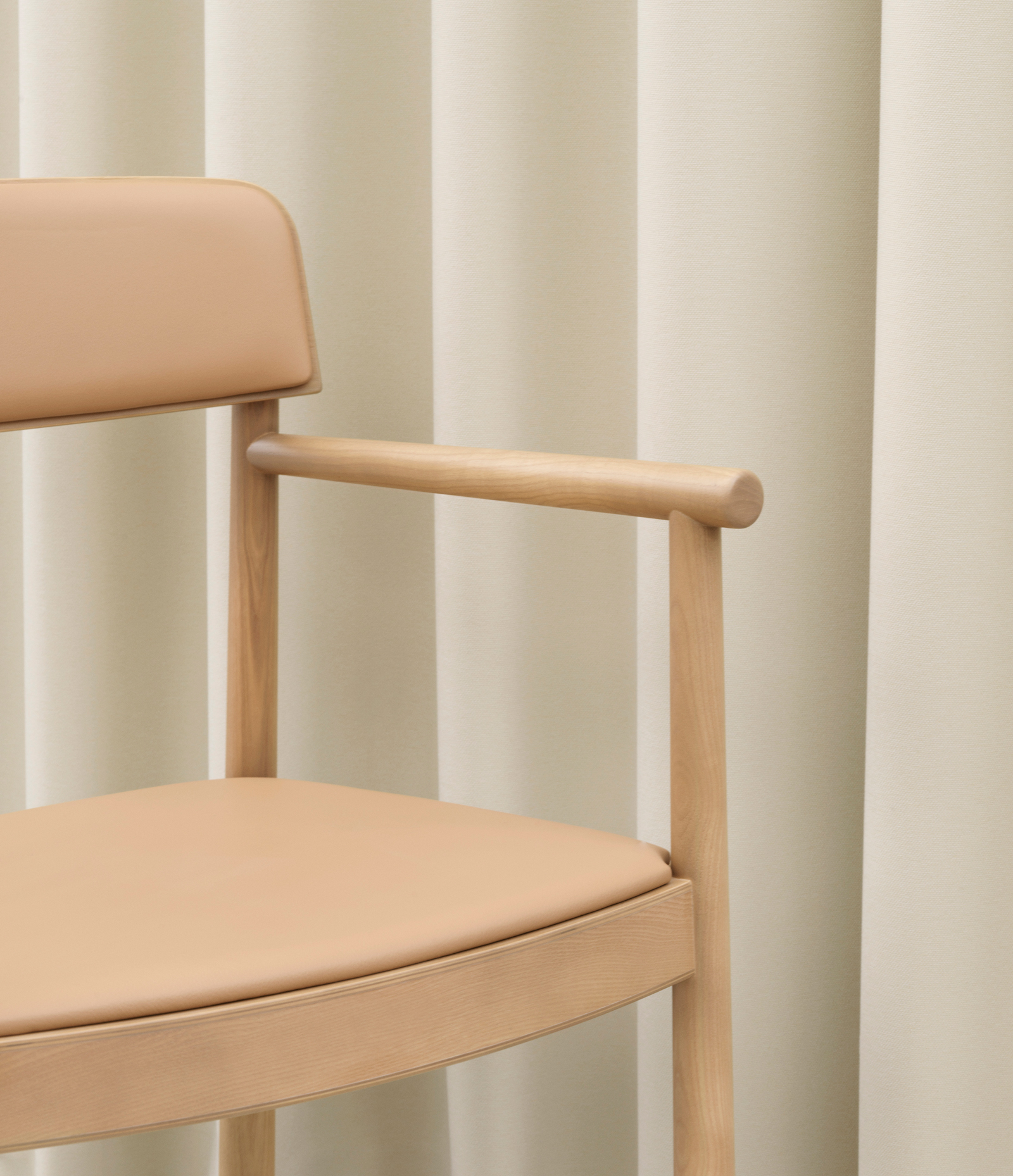
The Timb chair has a simple wooden structure with a richness of detail in the contrast between its curves and sharp lines. Its artisan traditions are also visible in its elegant dowel joints, which make it possible to manufacture the chair without the need for screws, allowing the wood itself to act as a focal point.
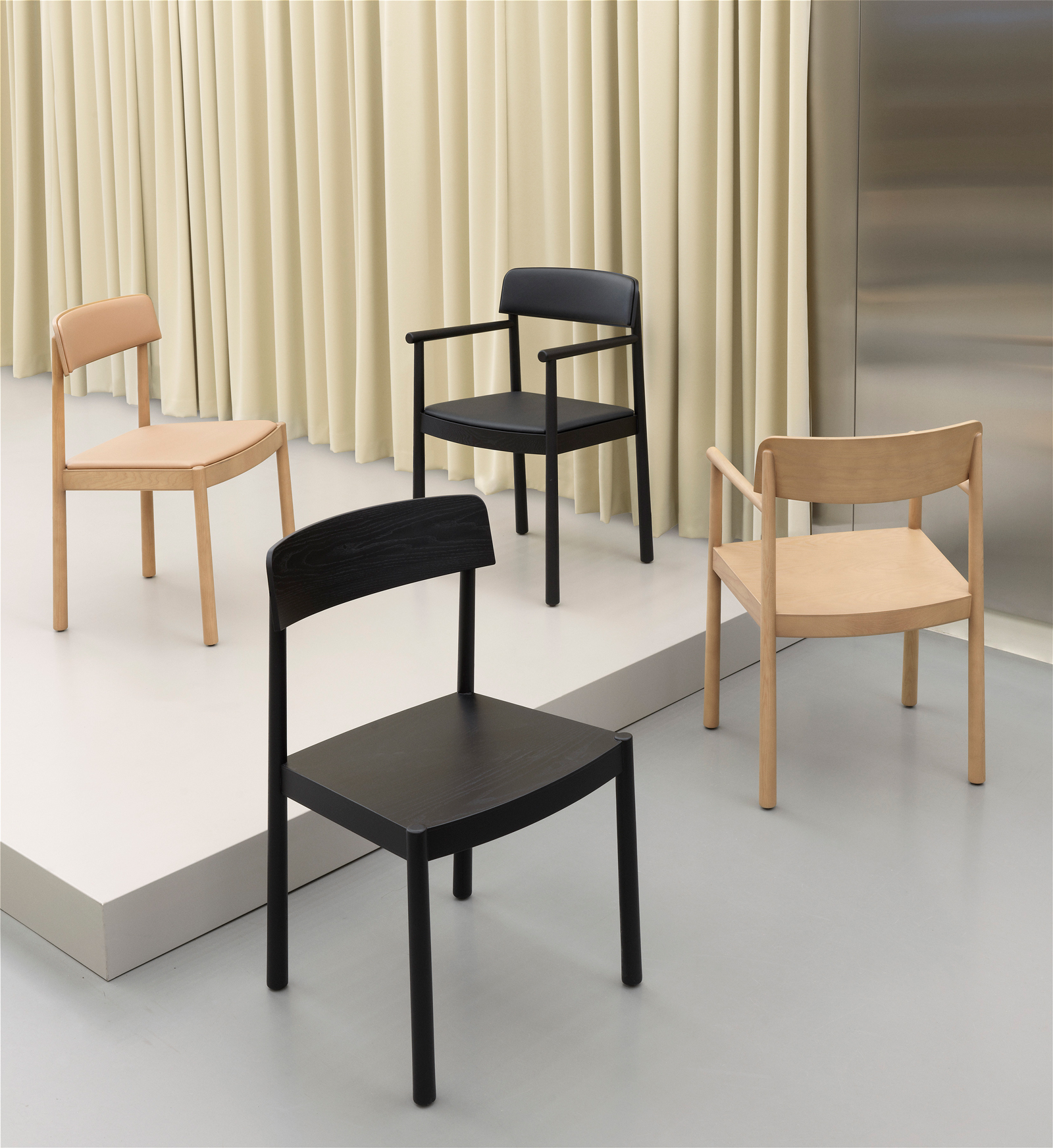
Timb is available in a golden brown or black lacquered edition, either with or without armrests.
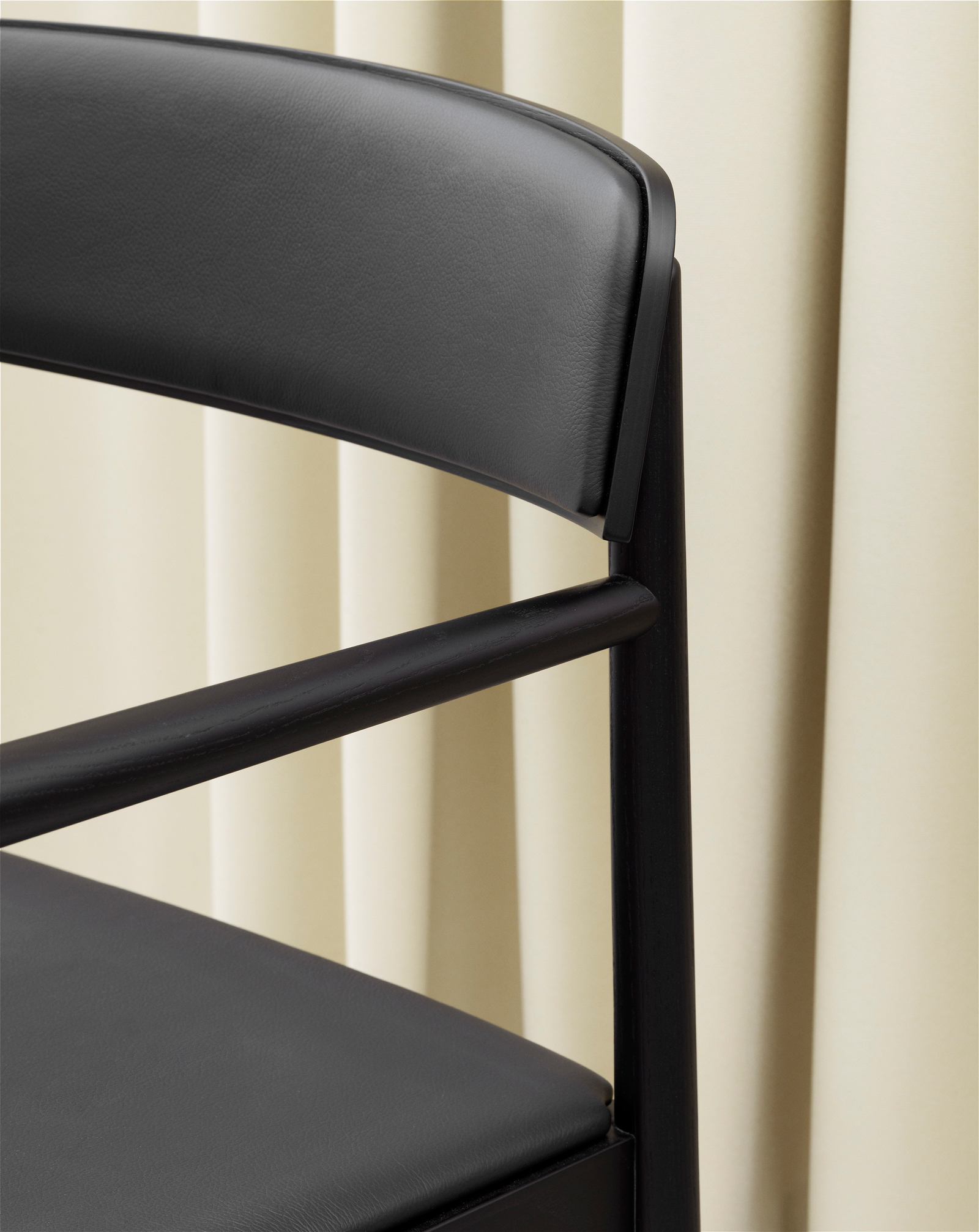
For increased comfort, the chair is also available with its seat and backrest upholstered in Ultra leather from our long-time collaborator Sørensen Leather. This embossed leather surface is both a durable choice and a great opportunity to add structure to the design. The leather upholstery comes in either black or camel to match the color of the frame and is manufactured entirely without the use of PCP or CFC, which are harmful to the environment.
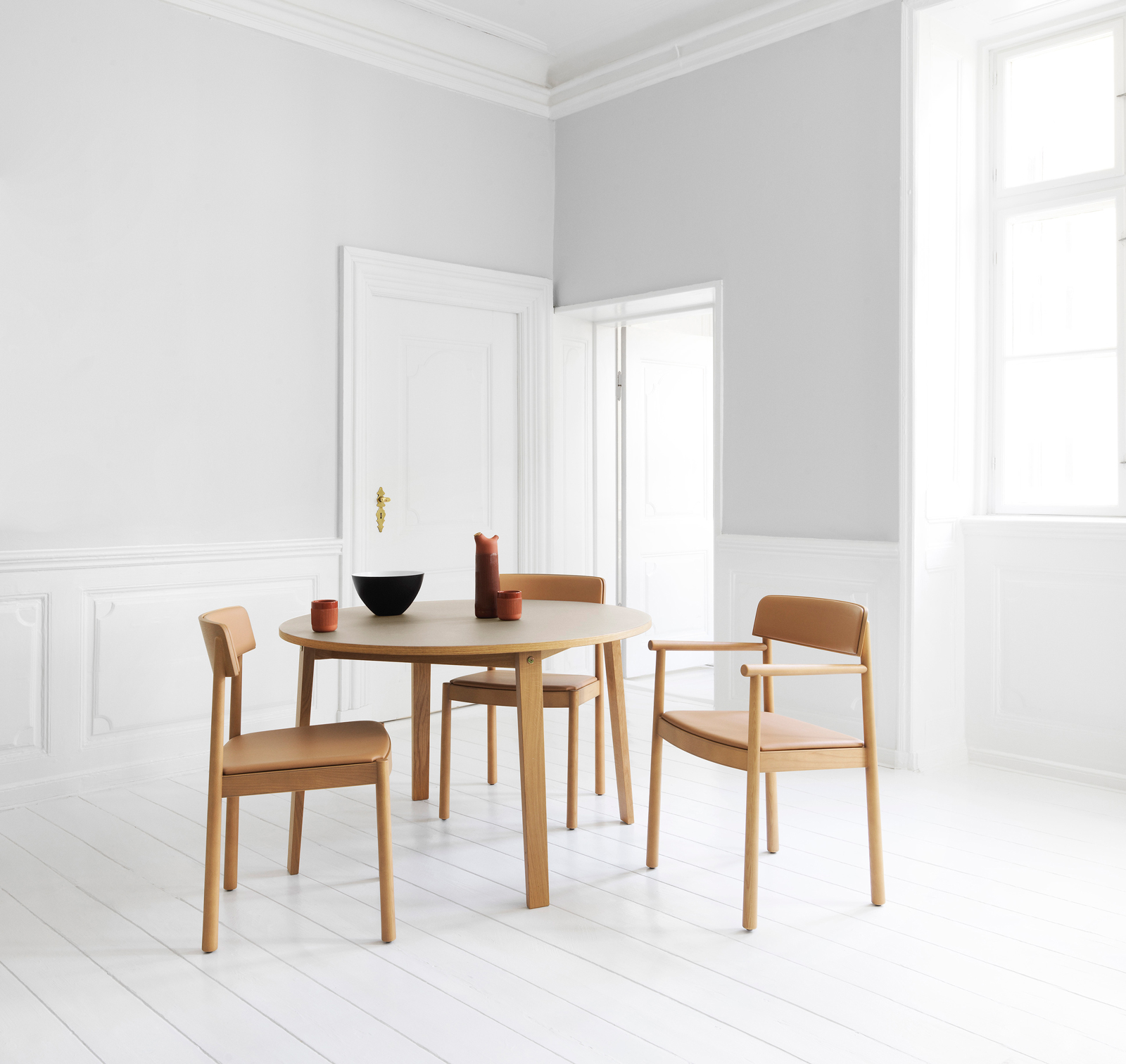
Timb is tested by the Danish Technology Institute to the European Standard EN 1022:2005 Level 2. The level 2 test classifies as extreme use, with examples of end-use being night-clubs, transport terminals, prisons and sport changing rooms.

